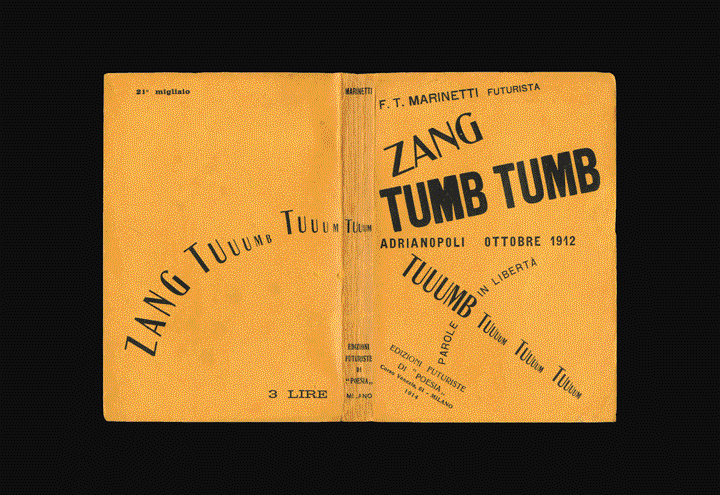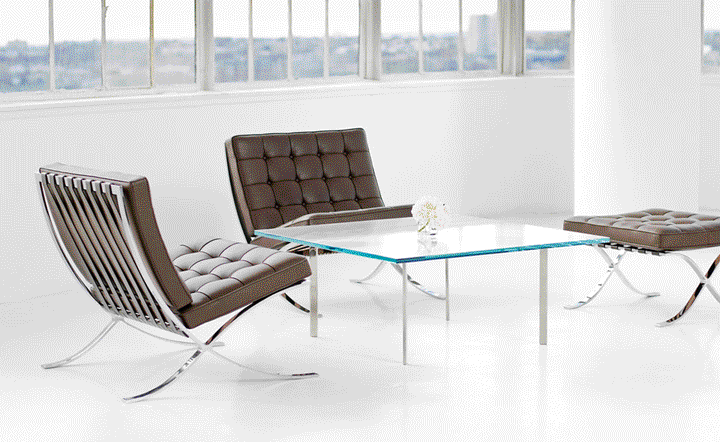On epoch: to be of one's time
Norma,
From the editor's desk
A hundred years ago, at the turn of the 20th century, pioneers of modern typography were engaged in an effort to express their epoch through typographical gesture. At that time graphic design wasn't formally codified as a discipline — all of them were in fact artists. Completely inebriated by the amazing possibilities and implications of an industrial revolution that had transformed all the archetypes of pre-industrial society, members of the avant-garde such as the Futurists sought a violent break with the past, mistakenly coming to believe everything that had been done until that moment was to be thrown away.
Marinetti said: "My revolution is directed against the so-called typographical harmony of the page, which is contrary to the flux and reflux, the leaps and bursts of style that run through the page itself. For that reason we will use, in the very same page, three or four different colors of ink, and as many as twenty different tpographical fonts if necessary."

n typography, the avant-garde momentum was crucial in breaking the symmetry and other stagnant dogmas of neo-classicism, but history would have to wait until Jan Tschichold and "Die Neue Typographie" to see the thrill and eclecticism of the avant-garde disappear, replaced by a more codified typographical discipline that -in hindsight- would go on to form a renewed bond with the best classical principles, such as proportions and the use of repetition, which were finally brought into the future with the development of the baseline grid and the work of masters like Max Bill and Josef Müller-Brockmann. Beginning in the '10s the same thing happened in architecture, with the imaginative visions of Bruno Taut and many others acting as a cultural catalyst. These would later rise to the highest expression of past and present perfectly joined together in the architecture of Mies van der Rohe and a few others.
As contemporary designers, the legacy we inherited from the generation that came before us is a deafening confusion. The reasons are too complex to be properly addressed here, but anyone who came of age in the new millennium can't help but agree. The so called 'post-modern' culture has vastly proved its failure in seeking to eliminate the massive spectrum of modernity, making the same miscalculation that the Futurists made towards classicism. Modern culture has developed through a long and tortuous path, over more than a hundred years and has delivered us the work and thoughts of masters who have been trying to clarify a new era defined by science and technology. Our epoch is a real epoch, driven by forces that surpass fashions and formalism as it was the case in the Medieval and Classical cultures.
If the reader has ever wondered how is it possible that a chair designed in the 1920s is still the epitome of modernity and appears in every movie where a luxury villa is shown, it is not because its forms are immortal. If we placed an authentic Greek temple in the middle of 5th Avenue in New York, it would appear terribly out of place in spite of the admiration we all have of its timeless beauty. The reason why many objects, furnishings and architecture designed more than half a century ago still seem so incredibly contemporary is more simple: it's because we are still living in the epoch for which they were designed. If one tries to conduct the same thought experiment with many objects designed over the last forty years, and particularly with those labeled as "post-modern", they will realize why they never made it far outside design museums. Much like the mullet haircut and bell-bottom jeans, they are nothing but the product of a fad that disappeared at same speed at which it came to be.

The historical and cultural blindness of our recent predecessors was believing that the modernity their elders sought with such strenght was something ephemeral that they should undo. They didn't realize they were living in the full development of an epoch in which we still are, and that to this day doesn't seem to give any signal of slowing down; the epoch of science and technology so vigorously expressed by masterpieces like "Metropolis" by Fritz Lang (1926) has developed to this day, to such an extent that enables us to prophesy artificial intelligence so advanced that within 10 years it will be better than humans in all 5 senses. 1
So what does this have to do with graphic design?
The best works of human creation (in any design discipline) can only interpret, question and shape their own epoch. Graphic design is no exception. If we really want to be designers of our time, we will need to work together — not in the destructive manner of the Futurists, but in the constructive way of the pioneers of modernity. We should avoid mistaking fads for cultural revolutions again, and perhaps being to wonder what are the best principles of the past to bring into the future.
-
1
Prediction by Mark Zuckerberg, as reported by The Verge. (theverge.com)
↩︎